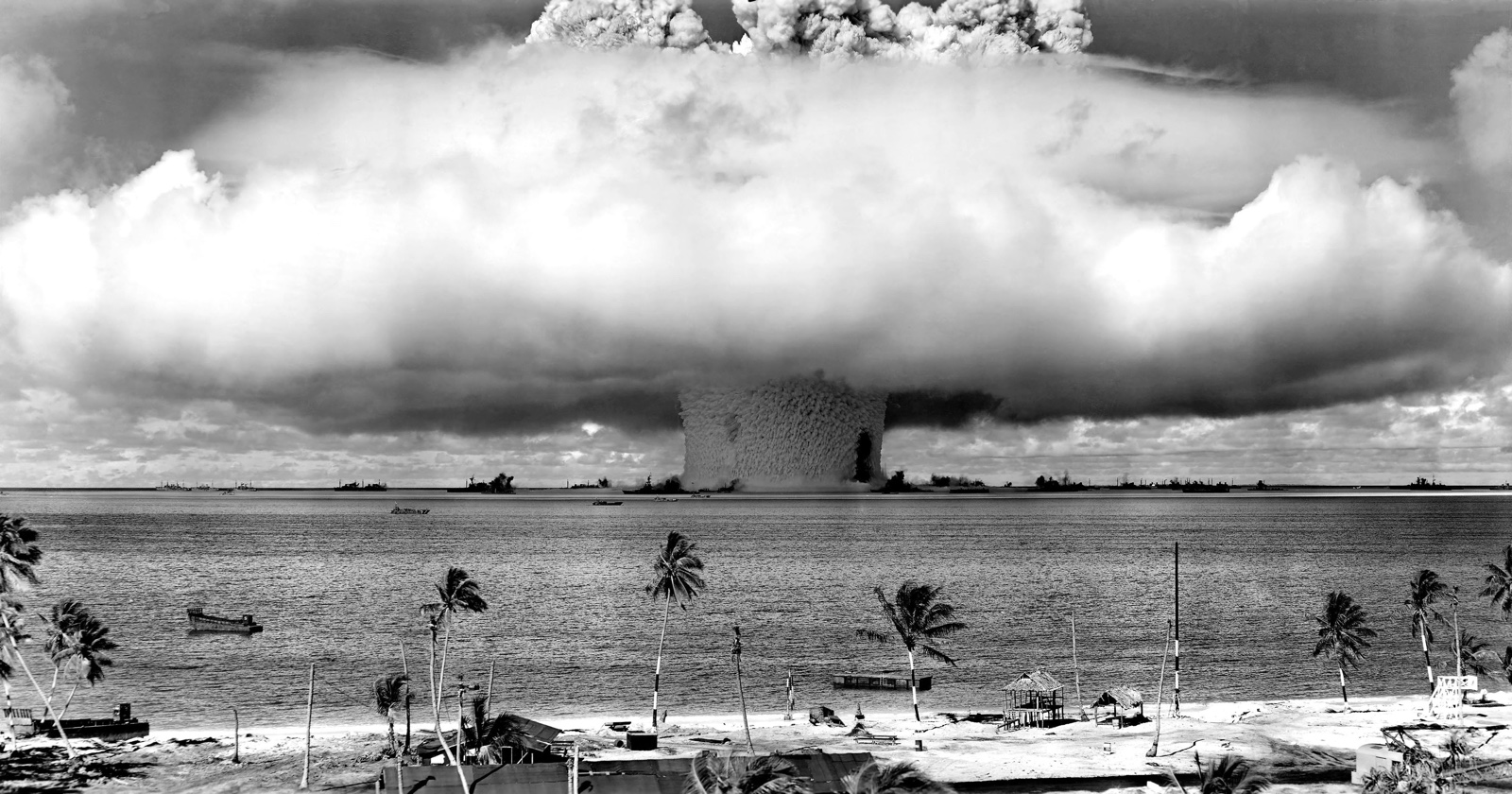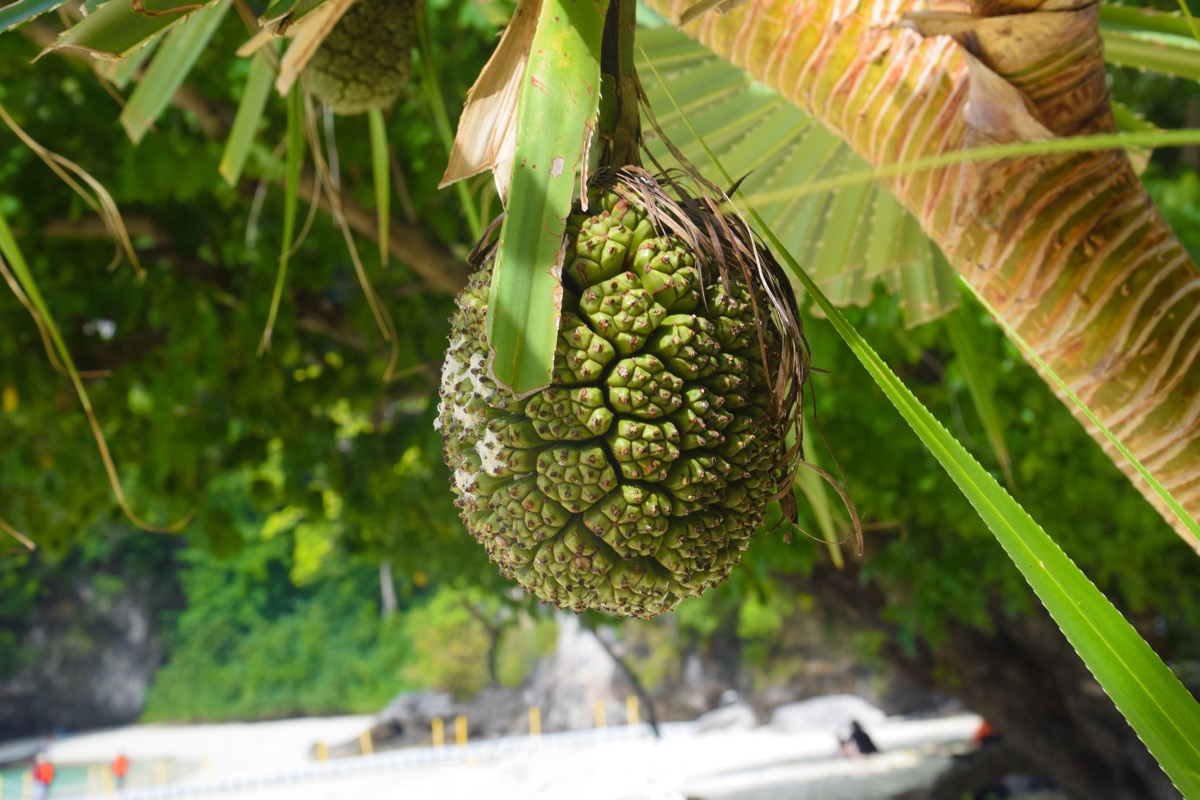The Marshall Islands Are 10 Times More 'Radioactive' Than Chernobyl

Some of the Marshall Islands in the Pacific Ocean — such as the Bikini and Enewetak atolls — are still more radioactive than Chernobyl and Fukushima, even though more than 60 years have passed since the United States tested radioactive weapons on those islands, a new study finds.
When testing the soil for plutonium-239 and -240, the researchers found that some of the islands had levels that were between 10 and 1,000 times higher than those on Fukushima (where an earthquake and tsunami led to the meltdown of nuclear reactors) and about 10 times higher than levels in the Chernobyl exclusion zone.
The researchers took only a limited number of soil samples, meaning a more comprehensive survey is needed, they said. Regardless, they were surprised that neither national governments nor international organizations had "any further guidance on permissible plutonium levels in the soil," even though levels in the Marshall Islands were high, the researchers wrote in the study. [Top 10 Greatest Explosions Ever]
Testing bombs
After dropping atomic bombs on the Japanese cities of Hiroshima and Nagasaki in 1945, effectively ending World War II, the United States decided to test more radioactive weapons. Some of these tests happened in the Marshall Islands, a chain of islands between Hawaii and the Philippines that was then a district of the Trust Territory of the Pacific Islands and was run by the U.S. on behalf of the United Nations. The first two bombs, called Able and Baker, were tested on Bikini Atoll in 1946 and kicked off a 12-year period of nuclear testing on the Bikini and Enewetak atolls, during which the U.S. tested 67 nuclear weapons.
The first-ever hydrogen bomb test, with the code name Ivy Mike, was tested on Enewetak in 1951. The U.S. conducted its largest hydrogen bomb test on Bikini Atoll — the 1954 Castle Bravo bomb, which was more than 1,000 times more powerful than Little Boy, the uranium weapon that decimated Hiroshima.
Related: The Pacific War: WWII in the East
In addition to contaminating the Bikini and Enewetak atolls, nuclear fallout from the tests also rained down on and sickened people living on Rongelap and Utirik atolls (also part of the Marshall Islands), the researchers said. In 2016, a team of researchers from Columbia University in New York published a study in the journal Proceedings of the National Academy of Sciences (PNAS) on the background gamma radiation in three of the northern Marshall atolls: Enewetak, Bikini and Rongelap. The researchers found that radiation levels on Bikini were higher than previously reported, so they decided to do more in-depth studies on radioactivity in the islands. (Nuclear weapons are one source that releases gamma-rays, which are like energetic X-rays.)
Get the world’s most fascinating discoveries delivered straight to your inbox.
More fallout
Now, that same team has written three new studies, published online yesterday (July 15) in the journal PNAS, on four of the atolls in the northern Marshall islands: Bikini, Enewetak, Rongelap and Utirik.
External gamma radiation levels were significantly elevated on Bikini Atoll, on Enjebi Island in Enewetak Atoll and on Naen Island in Rongelap Atoll, compared with an island in the southern Marshall Islands that the scientists used as a control, the researchers found.
The levels on Bikini and Naen islands were so high, they surpassed the maximum exposure limit that the United States and the Republic of the Marshall Islands agreed to in the 1990s, the researchers said. (On a side note, bikini swimsuits weren't named after the island because of its tropicality, but because the French designer wanted the two-piece swimsuit to be "explosive," just like the bomb tested there, said one of the study's senior scientists, Ivana Nikolic-Hughes, director of the K1 Project at the Center for Nuclear Studies and a senior lecturer of chemistry at Columbia University.) [Flying Saucers to Mind Control: 22 Declassified Military & CIA Secrets]
The researchers also found that the islands of Runit and Enjebi in Enewetak Atoll, as well as on Bikini and Naen islands, had high concentrations of certain radioactive isotopes in the soil. (An isotope is an element with a different number of neutrons in its nucleus.) These four islands had radioactive plutonium levels that were higher than those found in Fukushima and Chernobyl, the researchers found.
"What was surprising was just how high the external gamma radiation was for Naen, which is the outer island for Rongelap Atoll," Nikolic-Hughes told Live Science. "It was populated during the Bravo test … [the people there] were then moved, moved back and moved again. It's quite a dreadful history of what happened to Rongelapese people."
In their second study, the researchers worked with professional divers, who collected 130 soil samples from the Castle Bravo Crater at Bikini Atoll. The level of some of the isotopes — plutonium-239 and -240, americium-241 and bismuth-207 — was an order of magnitude higher than levels found on other Marshall Islands, the researchers found.
These findings are important because "measuring the radioactive contamination of the crater sediment is a first step in assessing the overall impact of nuclear weapons testing on the ocean ecosystems," the researchers wrote in the study.
In the third study, the researchers tested more than 200 fruits — mostly coconuts and pandanus — on 11 of the islands from four different atolls in the northern Marshall Islands. Cesium-137 levels didn't look good for a sizeable chunk of the fruits on Bikini and Rongelap atolls, which had radioactivity levels higher than those deemed safe by several countries and international organizations, the researchers found.
More work is needed to educate people living on the Marshall Islands about these dangers. Moreover, these findings and future research can shed light on whether it's safe for the Marshallese people to resettle or harvest food on some of these islands, the researchers said.
- In Photos: World's 10 Most Polluted Places
- In Photos: Fukushima Butterflies Plagued With Defects
- 10 Times HBO's 'Chernobyl' Got the Science Wrong
Originally published on Live Science.

Laura is the managing editor at Live Science. She also runs the archaeology section and the Life's Little Mysteries series. Her work has appeared in The New York Times, Scholastic, Popular Science and Spectrum, a site on autism research. She has won multiple awards from the Society of Professional Journalists and the Washington Newspaper Publishers Association for her reporting at a weekly newspaper near Seattle. Laura holds a bachelor's degree in English literature and psychology from Washington University in St. Louis and a master's degree in science writing from NYU.



